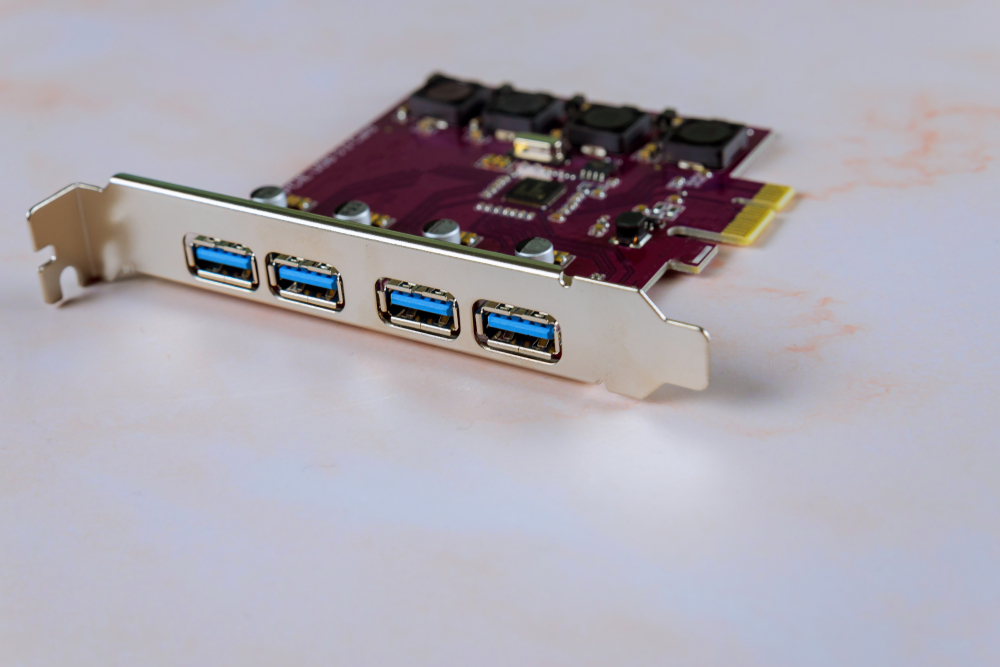In the vast landscape of IT hardware, add-on cards stand out as vital components that enhance the functionality and performance of computer systems. These versatile accessories provide the flexibility to upgrade and customize computers to meet specific needs and applications. This guest post delves into the significance of add-on cards, their various types, and their impact on computer hardware. By emphasizing key SEO keywords—IT Hardware, Add-On Cards, Computer Hardware, and Accessories—we aim to highlight the importance of these essential components in modern computing.
Understanding Add-On Cards
Add-on cards, also known as expansion cards, are circuit boards that can be installed into a computer’s motherboard to add new features or enhance existing ones. These cards are inserted into expansion slots on the motherboard, such as PCI (Peripheral Component Interconnect), PCIe (PCI Express), or AGP (Accelerated Graphics Port) slots. By leveraging these slots, users can significantly extend the capabilities of their computer systems.
Importance of Add-On Cards in IT Hardware
-
Enhanced Functionality: Add-on cards enable users to add new functionalities to their computers without the need for a complete system overhaul. For example, a user can add a high-performance graphics card to a system with integrated graphics to handle more demanding graphical tasks.
-
Improved Performance: Many add-on cards are designed to enhance the performance of specific computer components. Network interface cards (NICs), for instance, can provide faster and more reliable internet connections, while sound cards can deliver higher quality audio output.
-
Customization and Flexibility: Add-on cards offer a high degree of customization, allowing users to tailor their systems to specific needs. Whether it’s for gaming, professional work, or multimedia consumption, add-on cards can be selected to optimize performance in those areas.
-
Cost-Effective Upgrades: Rather than purchasing a new computer, users can often achieve significant performance improvements by installing one or more add-on cards. This cost-effective approach allows for incremental upgrades as needs evolve.
Types of Add-On Cards
-
Graphics Cards (GPUs): Graphics cards are among the most popular types of Add-On Cards. They are essential for rendering high-quality graphics in gaming, video editing, and other graphic-intensive applications. Modern GPUs also support parallel processing for tasks such as machine learning and scientific simulations.
-
Network Interface Cards (NICs): NICs enable computers to connect to networks. They come in various types, including wired (Ethernet) and wireless (Wi-Fi) versions. High-speed NICs, such as those supporting gigabit Ethernet, can significantly improve network performance.
-
Sound Cards: Sound cards enhance the audio capabilities of a computer, providing better sound quality and additional audio features. They are particularly important for music production, gaming, and multimedia applications.
-
Storage Controllers: Storage controller cards, such as RAID (Redundant Array of Independent Disks) controllers, manage multiple storage devices and improve data redundancy and performance. They are commonly used in servers and high-performance workstations.
-
USB Expansion Cards: These cards add additional USB ports to a computer, allowing users to connect more peripherals. They can include a mix of USB 2.0, USB 3.0, and even USB-C ports to accommodate various devices.
-
Capture Cards: Capture cards are used to record video and audio from external sources, such as gaming consoles, cameras, and other multimedia devices. They are essential for content creators who stream or record high-definition video.
Benefits of Using Add-On Cards
-
Performance Enhancement: Installing high-performance add-on cards can transform a computer’s capabilities. For instance, a powerful GPU can turn a standard PC into a gaming powerhouse or a capable workstation for graphic design.
-
Extended Lifespan: Add-on cards allow users to upgrade and extend the lifespan of their existing computer systems. Instead of replacing the entire system, users can update specific components to keep up with new software and performance demands.
-
Versatility: Add-on cards provide versatility, enabling users to adapt their systems for different tasks. A user can install a NIC for better network performance, a sound card for improved audio, and a storage controller for enhanced data management, all in the same system.
-
Customization: Add-on cards offer a high degree of customization, allowing users to build systems tailored to their unique needs and preferences. This is particularly important for gamers, professionals, and enthusiasts who require specific hardware configurations.
Installing and Managing Add-On Cards
-
Choosing the Right Card: When selecting an add-on card, it is essential to ensure compatibility with the existing system. Users should check the type of expansion slots available on their motherboard and select cards that fit those slots.
-
Installation Process: Installing an add-on card typically involves powering down the computer, opening the case, and inserting the card into the appropriate slot. Once the card is securely in place, the system can be powered back on, and drivers can be installed to enable the new hardware.
-
Driver Management: Drivers are software programs that allow the operating system to communicate with the hardware. Keeping drivers up-to-date is crucial for ensuring optimal performance and compatibility. Manufacturers often provide the latest drivers on their websites.
-
Troubleshooting: If an add-on card does not work as expected, troubleshooting steps may include checking the physical installation, ensuring the card is properly seated in the slot, updating drivers, and verifying compatibility with other system components.
Future Trends in Add-On Cards
-
AI and Machine Learning: The integration of AI and machine learning capabilities into add-on cards is an emerging trend. GPUs with dedicated AI processing units and specialized AI accelerators are becoming more common, enabling advanced computational tasks.
-
High-Speed Connectivity: With the growing demand for faster data transfer rates, add-on cards that support high-speed connectivity standards, such as Thunderbolt 4 and PCIe 4.0, are gaining popularity. These cards provide significant performance boosts for data-intensive applications.
-
Virtual Reality (VR) and Augmented Reality (AR): As VR and AR technologies continue to evolve, add-on cards designed to support these immersive experiences are becoming more advanced. High-performance GPUs and specialized VR/AR interfaces are essential for smooth and realistic interactions.
-
Sustainability and Energy Efficiency: The development of energy-efficient add-on cards is a growing focus, driven by environmental concerns and the need to reduce power consumption. Manufacturers are designing cards that deliver high performance while minimizing energy usage.
Conclusion
Add-on cards are indispensable components in the world of IT hardware, offering a myriad of possibilities for enhancing and customizing computer systems. From boosting graphical performance with powerful GPUs to improving network connectivity with high-speed NICs, these accessories provide the flexibility and scalability needed to meet evolving demands. By understanding the significance of add-on cards and selecting the right ones for specific needs, users can unlock the full potential of their computer hardware and enjoy a tailored, high-performance computing experience.
As technology continues to advance, staying informed about the latest trends and innovations in add-on cards will empower users to make informed decisions and keep their systems at the cutting edge of performance and functionality. Whether for gaming, professional work, or everyday computing, add-on cards remain a cornerstone of modern computer hardware, driving innovation and enabling endless possibilities.




